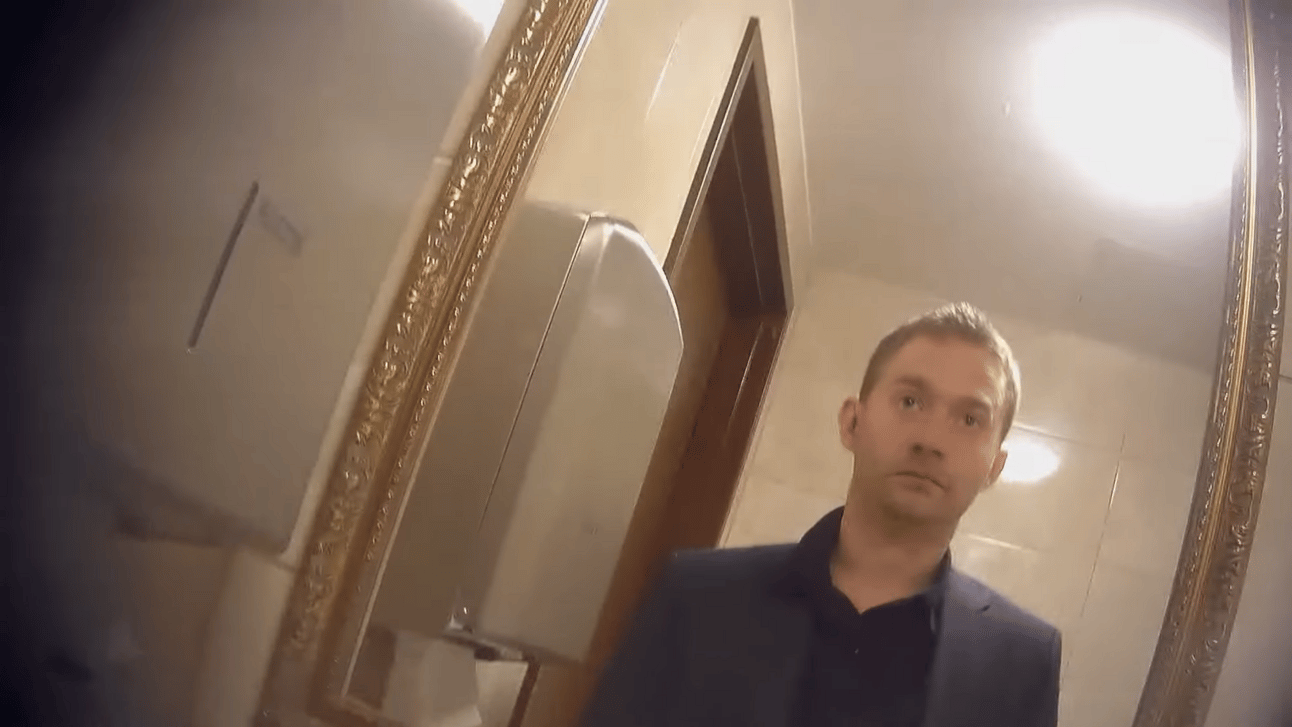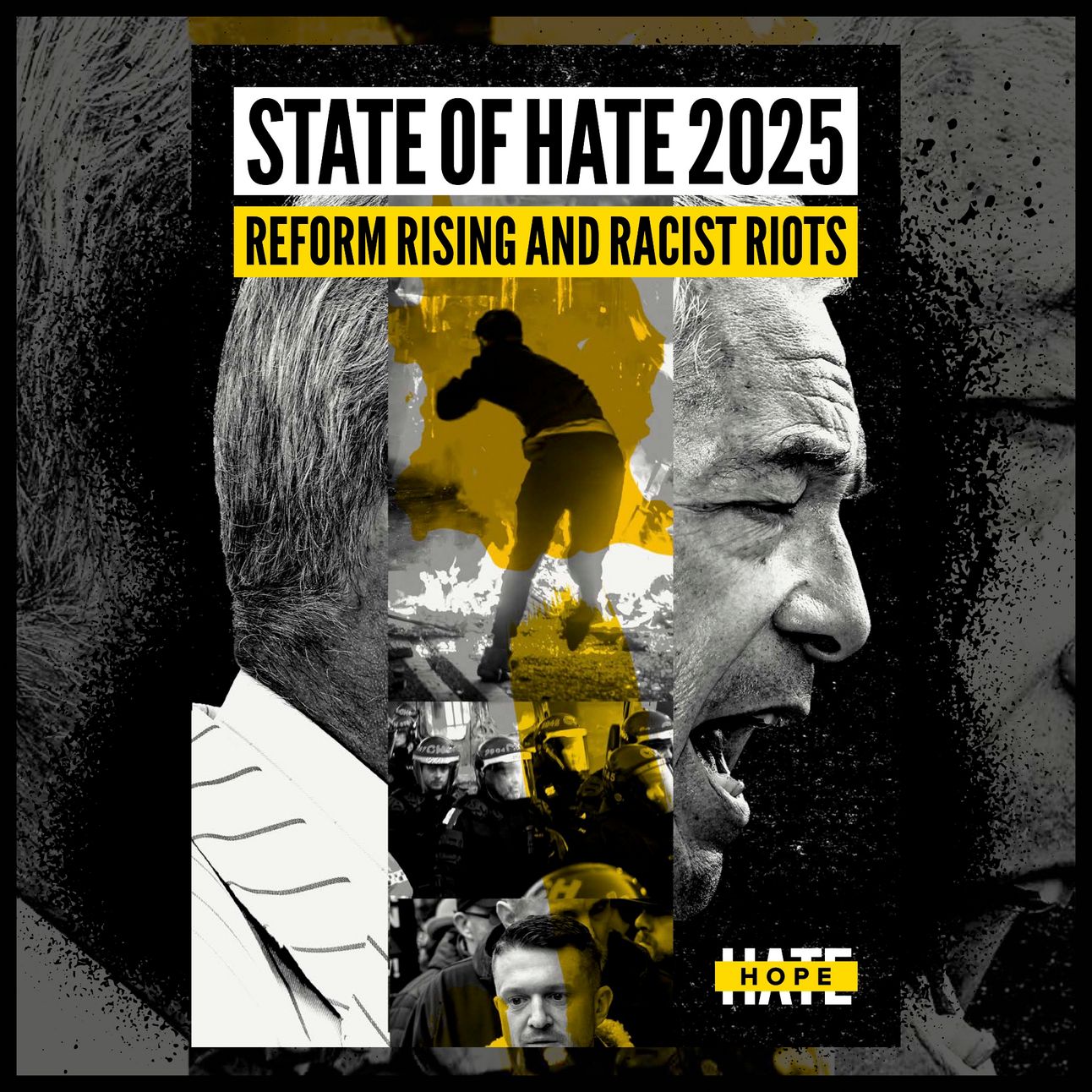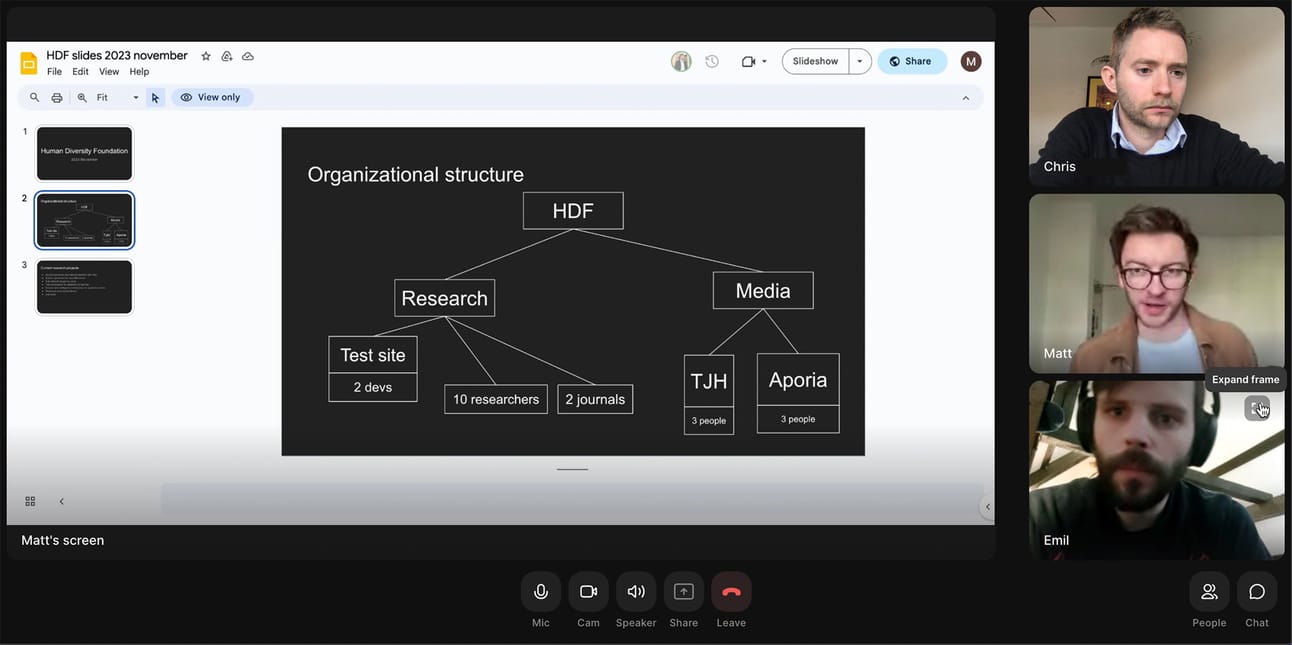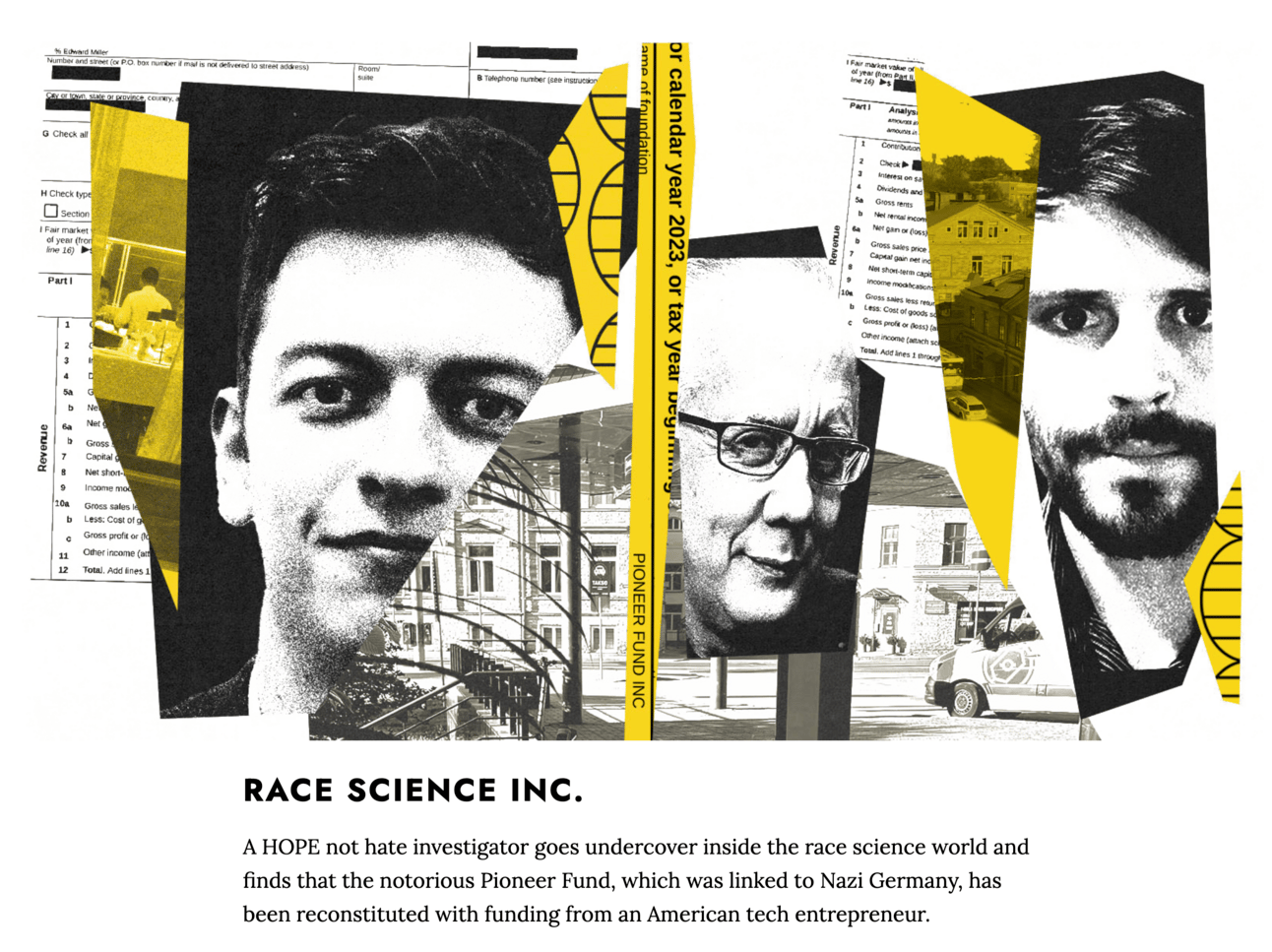- Debrief - The undercover dispatch
- Posts
- Year of the Rat: The Journalist Who Exposed the New Supremacist Right
Year of the Rat: The Journalist Who Exposed the New Supremacist Right
How Harry Shukman infiltrated a network of extremist organizations bound by racism, pseudo-science, and Silicon Valley billionaires
The far-right no longer looks like it once did. It has long abandoned the aggressive, overt imagery that marked its past. Instead of swastikas, we now see suits and ties, polished speeches, and professional LinkedIn profiles.
To counter their propaganda effectively, one must witness from the inside what these extremist movements hide beneath the surface. This is exactly what British journalist Harry Shukman did, infiltrating the new far-right in England working for the anti-fascist and anti-racist organization, Hope Not Hate.
His undercover work led to a series of multimedia investigations, the documentary Exposing the Far Right, produced by Channel 4, and a book entitled Year of the Rat. Yet what Shukman discovered surpassed even the wildest expectations.
We asked him to share his experience exclusively with readers of our newsletter, and if you'd like, you can also hear it directly from him in the latest episode of Debrief – The Undercover Podcast.
This issue was written by Luigi and edited by Sacha.
In This Issue of Debrief:
The new face of the old far-right
Sitting at a pub table in rural England, Charlie, leader of a white supremacist group, menacingly addresses Chris, a young man sitting across from him: “You better not turn out to be an infiltrator for Hope Not Hate.”
The table falls silent. Charlie continues staring Chris straight in the eye, searching for hesitation—perhaps a sign. Then he bursts into laughter, and the others around the table join in. Only then does Chris play along, joking: "Get me out of here! They’ve discovered me!”
The twist is that the person everyone at the pub knows as Chris is actually Harry Shukman, a journalist and researcher with the anti-fascist and anti-racist group Hope Not Hate, who is undercover to document the plans and actions of the movement.

Harry gets ready to attend a meeting on behalf of Hope Not Hate under his alias, “Chris” | Channel 4
Over the course of a year, he infiltrates nine groups: political parties, Holocaust-denying circles, and organizations posing as research centers, whose real aim is to demonstrate—with supposed scientific backing—the genetic inferiority of non-white people.
Ultimately, Shukman discovered that one of these groups was funded by none other than Silicon Valley magnate Andrew Conru, an American entrepreneur behind several tech companies—the best-known being Adult Friend Finder, a casual dating website focused on hookups, partner swapping, and erotic experiences, worth hundreds of millions of dollars.
It was 2023, and the far-right no longer dressed like the far-right. They spoke eloquently, attended elite universities, pursued funding, and strategized for the long term. Harry was there to document it all from the inside.
Hope Not Hate
Hope Not Hate is an anti-fascist organization founded in 2004 in the United Kingdom, initially with the goal of countering far-right extremism in Britain, but over time it has evolved into a genuine investigative powerhouse.
In addition to public campaigns and social counter-narratives, HNH has built a network of informants and researchers—often from within the very circles it seeks to expose—including infiltrators, former activists, and undercover journalists.
This strategy is complemented by meticulous data analysis and digital monitoring. Each year, HNH publishes the State of Hate report, mapping the groups, individuals, ideologies, and funding streams that sustain Britain’s far-right movements.

The cover of the latest Hope Not Hate report
In 2017, HNH was instrumental in thwarting a planned attack against Labour MP Rosie Cooper, which had been plotted by a militant from the neo-Nazi group National Action. The attack was prevented thanks to the cooperation of a former member of the group who had become an informant for Hope Not Hate. Following this incident, National Action was outlawed.
But at the heart of their work is also the creation of cultural antibodies. HNH doesn’t just expose hate—it goes into schools to explain how hatred spreads and how it can be exploited politically.
Race theories and Silicon Valley
“The thing that surprised me the most was how not all people who could be described as far right are skinheads with swastika tattoos,” Harry told me. “They might not dress like Nazis, but they might have the same views as them. There certainly are street activism groups, which readers might be more familiar with, but there’s also a proliferation of organizations that dress differently and speak more eloquently. They have connections to money and power, and they're promoting the same type of abuse—but with a far greater level of sophistication.”
Among these abuses, scientific racism is certainly one of them. When we talk about this term, we immediately think of eugenics, anthropometry, craniometry, and other pseudo-disciplines that have been banned over the past century. Yet, these ideas are still very much alive. In the investigation “Race Science Inc.”, stemming from Shukman’s undercover work, he exposed a network of think tanks, private foundations, and academic publications promoting so-called "human diversity science."
“It’s not a fringe theory. It has a lot of mainstream appeal,” Shukman explained. “Elon Musk, the richest man in the world, regularly reposts race scientists. We even found evidence of British policymakers who support these kinds of ideas.”
One of the groups infiltrated by Harry Shukman was the Human Diversity Foundation, a hybrid between a cult-like organization and a think tank targeting wealthy young men. Their goal was simple: recruit affluent, isolated individuals, radicalize them, and collect their money. To gain their trust and get them to reveal their plans, Harry had to adopt a slightly different persona than usual.

The moment Harry uncovered how the Human Diversity Foundation operates | Hope Not Hate
“No one wanted to talk to me because I was, you know, some tedious kind of corporate loser. And so we had an idea—not to radically alter, but just tweak the person I was pretending to be. I still had the same job, but my backstory was that I'd recently come into a big inheritance. Suddenly, I had a lot of money and could invest in projects that interested me. We found this really opened doors. If you look at many of the successful undercover journalism stories of recent years, money tends to play a role.”
It worked. Thanks to this infiltration, Shukman uncovered the identity of the man secretly funding the organization: Andrew Conru, the Silicon Valley entrepreneur.
The Debrief: where it all comes together
“Debriefs never happen anywhere glamorous, you know,” Harry says, reflecting on those moments of epiphany during an investigation. They occur in taxis, anonymous hotel hallways, messy kitchens, in the newsroom late at night when everyone else is asleep. That’s when all the threads reconnect, when details that seemed insignificant suddenly become illuminated, and you finally grasp what just happened, what you’ve truly uncovered.
It was precisely in one of those moments—late at night, riding in a moving car—that Harry realized one of the most crucial points of his entire investigation: the Human Diversity Foundation, the organization he’d infiltrated by posing as a wealthy heir, wasn't actually a new radical group at all. It was, instead, a reincarnation of a group that already existed: the Pioneer Fund, a eugenicist organization founded in the 1930s, the dark heart of American race science.

One of the pieces of the investigation | Hope Not Hate
It was a subtle yet definitive shift. The ideas they promoted weren't unknown. The organization was systematically attempting to reintroduce a dangerous ideology—one that history had deliberately forgotten—now repackaged with new tools, fresh faces, and considerable financial resources.
“You would not have some of the most consequential stories of the 19th and 20th—and hopefully 21st—centuries without this type of journalism,” Harry Shukman told me about undercover reporting. “And I think I’d love to see more of it.”
It’s partly to fulfill this wish that every week we'll be back with another story like this.
If you enjoyed this issue, please share it with someone who might be interested.
Until the next Debrief,
Sacha & Luigi
If you have suggestions, questions, tips (or insults), drop us a line at::
👉 [email protected]
If you enjoyed this newsletter, pass it along to your friends using this link:
👉 https://debrief-newsletter.beehiiv.com/
Follow us on Instagram, occasionally we'll upload content different from the newsletter:
👉 https://www.instagram.com/debrief_undercover/
We've also launched a podcast featuring interviews with the authors of memorable undercover investigations:
👉 https://open.spotify.com/show
And if that's still not enough, join our Telegram channel, where we can keep the conversation going:
👉 https://t.me/debrief_undercover

Reply